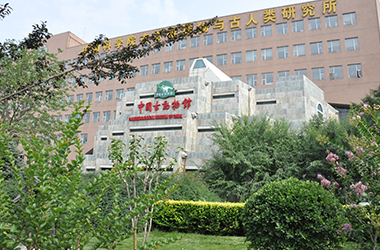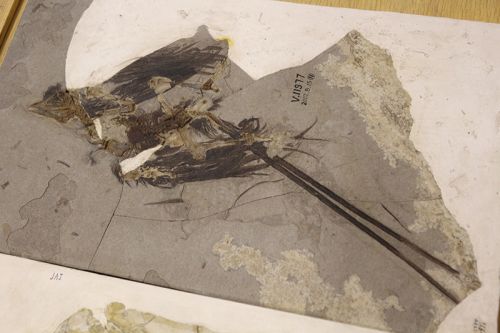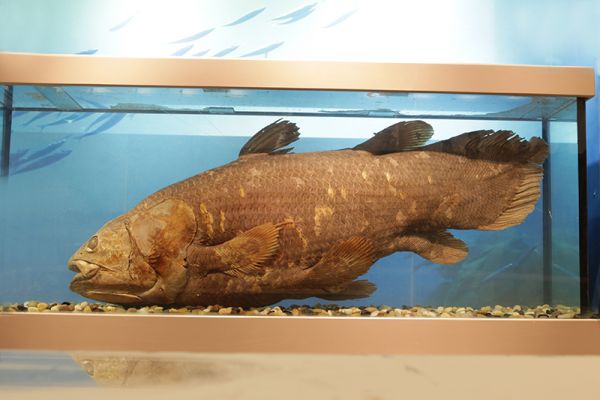Chinese Name: 中国古动物馆 Pronunciation: Zhōngguó Gŭdòngwùguăn
Building Time: 1995
Suggested Visiting Hours: About 1 to 3 Hours
Address: No.142, Xizhimenwai Street, Xicheng District, Beijing, China
Building Area: About 3,000 square meters
| Tourists | Ticket Price |
| Adult | 20 yuan |
| Seniors aged over 60 (with Chinese Seniors Card or ID cards) | 10 yuan |
| Students (with students ID, not applicable to graduate students) | 10 yuan |
| Children (over 1.3 meters) | 10 yuan |
1. Tickets for 3D movies are 10 yuan per person. The movies are shown on weekends, official holidays, and summer and winter vacations.
2. Visitors shall book the tickets on the WeChat Official Account in advance.
Children below 1.3 meters are free of charge.
| Museum | Tuesday to Sunday |
| Opening Hours | 9:00 - 16:30 |
| Ticket Office Opening Hours | 9:00 - 16:00 |

The Paleozoological Museum of China (PMC), as a branch of the Institute of Vertebrate Paleontology and Paleoanthropology in China, is aimed to impart knowledge of paleobiology, paleoecology, paleoanthropology, and the theory of evolution to visitors.
The museum is located in Xicheng District, Beijing, neighboring Beijing Planetarium in the east and facing Beijing Zoo across the street in the north, covers a total building area of over 3,000 square meters and an exhibition area of nearly 2,000 square meters.
Based on the over 200,000 specimens collected by the Institute of Vertebrate Paleontology and Paleoanthropology, the Paleozoological Museum of China was selected to display about 800 specimens of them. Various kinds of fossil specimens in the stratum from 40 billion years ago to 10,000 years ago are displayed, ranging from the agnatha fish to bony fish and cartilaginous fish, from amphibians to reptiles, and from the dinosaurs to mammals until the fossil apes evolving into homo sapiens.

As a national-level museum of natural science, the exhibition halls of the PMC are focused on the topics of ancient fish-like animals, mammals, amphibians, reptiles, and birds, and ancient human and paleolith. Another two halls are dedicated to palaeovertebrates and human evolution. Visitors can also find a special exhibition hall (east hall) and a 3D cinema.
In the exhibition halls for ancient fish-like animals, tourists will watch fish fossils in every geological time and evolutionary phases, such as jawless fishes, and original Placodermi. In the exhibition of amphibians, the displayed amphibian’s fossils originated from 200 million years to 10 million years ago. Because the amphibians have more cartilages and prefer a moist environment, their bodies were fast in decomposition and hard to form in fossils.
The ancient reptile exhibition shows a variety of fossils of reptiles, such as the biggest freshwater turtle fossil -- Nanxiong turtle, crocodile fossils, pterosaur, famous as a sea monster and king of the sky in Mesozoic as a marine reptile, dinosaurs, and mammal-like reptiles, the ancestor of mammals.

In the ancient bird exhibition, there are displays of ancient bird fossils from all geological times, among which the Confuciusornis is the earliest bird with a break in the world except for archaeopteryx.
The ancient human and paleolith exhibition is opened in 1999. It shows the skull of Sinanthropus pekinensis and palaeoanthropology fossils received from foreign countries to tell the story of humane origin and evolution. Human evolution has gone through a long history. Since hominid came into being, it has evolved into a lot of species, such as South African apes, homo habilis, homo Erectus, etc. In more than 200 thousand years ago, only homo sapiens had survived and the others went extinct.
In the ancient mammal exhibition, the mammal fossils show how the mammal grows from a small branch of the creatures to dominant biology in diverse families throughout hundreds of millions of years.
In the east hall, some lively and interesting activities and some special exhibitions are held from time to time. The “Exhibition of the Paleontological Explorations into the Tibetan Plateau” is presently exhibited in the east hall.

The Neo-Tethys Ocean died when the Indian subcontinent collided with Eurasia in the early Cenozoic era. Many ancient oceans had died owing to land collisions, but this one changed the planet so profoundly.
It was this collision that created the Qinghai-Tibet Plateau. The Qinghai-Tibet Plateau resulted in changes in climate and environment and changed the course of life in this region. The plateau has become a “natural laboratory” for studying the relationship between life evolution and the environment. Visitors will be amazed by the interesting exhibits.
The Latimeria showed in the museum, captured in the Comoro Sea in 1976, was a gift from the Comorin Government. China has only six precious pieces of the Latimeria specimen. The museum displays one of the best-preserved specimens.
1. The museum is closed Monday.
2. The group appointment is unaccepted on the weekend and official holidays and shall be made three working-days in advance.
Take bus 27, 87, 105, 107, 111, 129, 305, 360, 362, 604, 347, 332, 563, 534 or Night 8, and get off at Beijing Zoo Station.
Take bus 102, 103, or Night 12, and get off at Erligou Station.
Take bus 334, BRT360, or 695, and get off at Xiyuan Street Station.
Take Metro Line 4 (Daxing) and get off at Beijing Zoo Station (Exit D).
Take Metro Line 6 or 9 and get off at Baishiqiao Nan Station (Exit B).
Chinese: 请带我去中国古动物馆。English: Please take me to the Paleozoological Museum of China.
If you go to the Paleozoological Museum of China from the center of Beijing (Grand Hyatt Beijing), it takes about 35 minutes (about 35 yuan).
If you go to the Paleozoological Museum of China from Beijing Capital International Airport, it takes about 40 minutes (about 75 yuan).
If you go to the Paleozoological Museum of China from Beijing Daxing International Airport, it takes about 1 hour (about 140 yuan).
If you go to the Paleozoological Museum of China from Beijing West Railway Station, it takes about 20 minutes (about 25 yuan).
